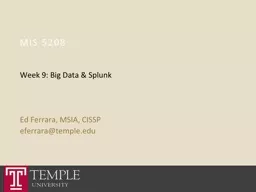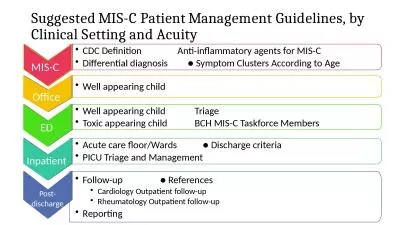PPT-MIS 5208 Ed Ferrara, MSIA, CISSP
Author : phoebe-click | Published Date : 2019-12-02
MIS 5208 Ed Ferrara MSIA CISSP eferraratempleedu Week 9 Big Data amp Splunk Agenda Chapter 1 Introduction Splunk amp Big Data What is Big Data Alternate Data Processing
Presentation Embed Code
Download Presentation
Download Presentation The PPT/PDF document "MIS 5208 Ed Ferrara, MSIA, CISSP" is the property of its rightful owner. Permission is granted to download and print the materials on this website for personal, non-commercial use only, and to display it on your personal computer provided you do not modify the materials and that you retain all copyright notices contained in the materials. By downloading content from our website, you accept the terms of this agreement.
MIS 5208 Ed Ferrara, MSIA, CISSP: Transcript
Download Rules Of Document
"MIS 5208 Ed Ferrara, MSIA, CISSP"The content belongs to its owner. You may download and print it for personal use, without modification, and keep all copyright notices. By downloading, you agree to these terms.
Related Documents








![[UPDATED] ISC2 CISSP-ISSEP Certification Question & Answers](https://thumbs.docslides.com/981508/updated-isc2-cissp-issep-certification-question-answers.jpg)
![[eBOOK]-CISSP Certification All-in-One Exam Guide, Fourth Edition (Cissp All-In-One Exam](https://thumbs.docslides.com/985481/ebook-cissp-certification-all-in-one-exam-guide-fourth-edition-cissp-all-in-one-exam-guide.jpg)




